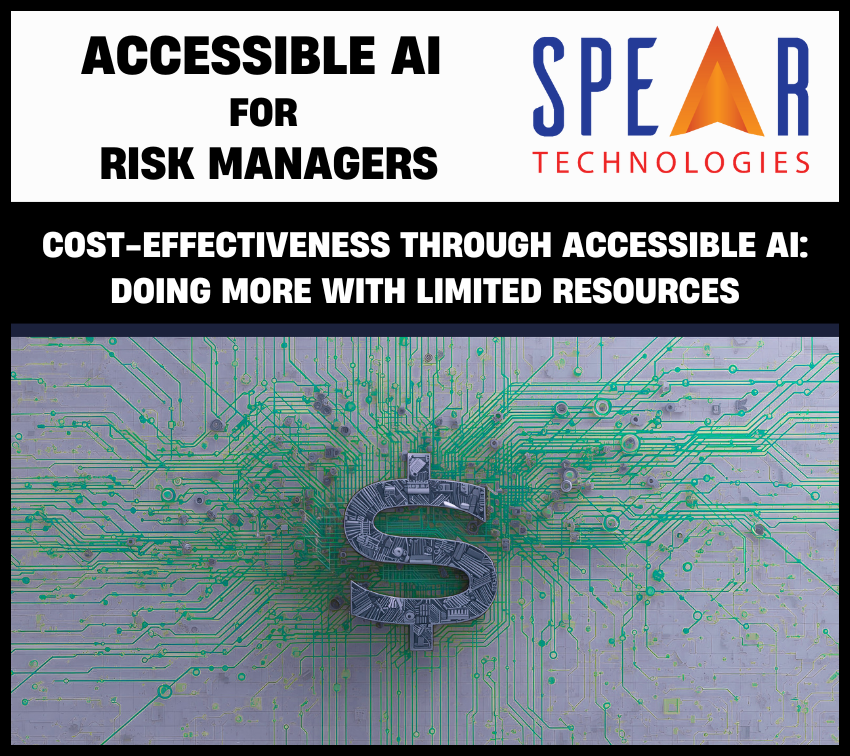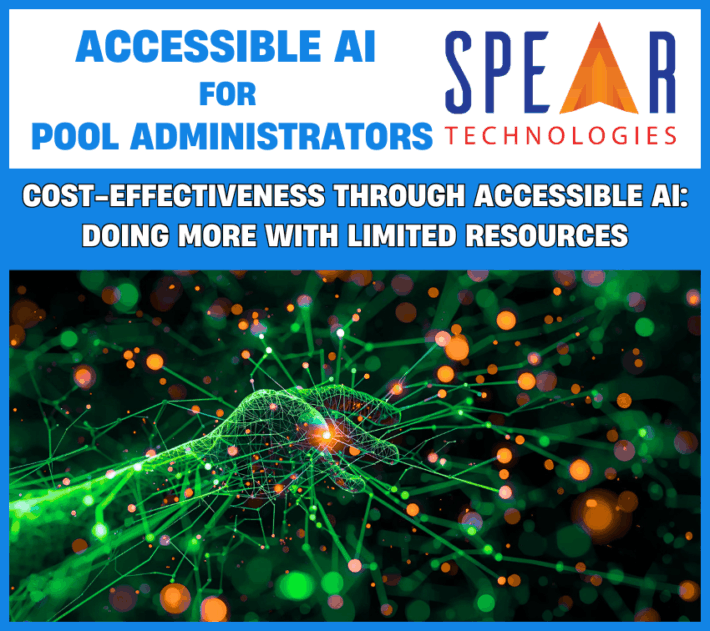Accessible AI for Risk Managers: Cost-Effectiveness Through Accessible AI: Doing More With Limited Resources

Modern risk teams face growing complexity and shrinking resources. They’re tasked to analyze, forecast, and prevent losses while managing compliance, member communication, and reporting — all without expanding staff or budgets.
Accessible AI for Insurance changes that equation. By embedding predictive and explainable intelligence directly within your claims management system or insurance software solution, risk managers gain visibility, control, and measurable ROI — turning every decision into a data-driven advantage.
Why It Matters for Risk Managers
Risk leaders today operate at the intersection of analytics, compliance, and operational reality. But without accessible AI, much of that work remains reactive — responding to claims trends after they’ve already caused financial or reputational damage.
With Accessible AI for Insurers built into your platform, risk teams can:
- Detect high-risk claims 40% faster, enabling earlier interventions and preventing escalation.
- Improve exposure model accuracy by 25%, strengthening reserve planning and financial forecasting.
- Reduce litigation-prone cases by 30%, using sentiment analysis and early warning indicators.
- Present clear ROI to boards and auditors through traceable, explainable, and documented AI-driven insights.
Accessible AI gives risk managers the ability to see patterns before they become losses — and to act confidently, knowing every decision is backed by transparent data.
The result? Risk prevention that’s measurable, defensible, and achievable.
Empowering Business Users with AI They Can Shape
Accessible AI is designed for the people who understand risk best — not just for data scientists. Within SpearClaims™, risk analysts and managers can:
- Adjust exposure weightings to reflect current market conditions or policy changes.
- Simulate “what-if” loss scenarios and visualize their potential impact on reserves and reinsurance.
- Review and override predictions in real time when local or contextual insight changes the equation.
This hands-on accessibility ensures AI supports — not dictates — decision-making. Risk experts stay firmly in control, guiding automation with professional judgment rather than being guided by it.
When human expertise and machine intelligence work together, oversight becomes a proactive advantage rather than a reactive burden.
Why Business-User Accessibility Is a Game-Changer
When AI is designed for accessibility and transparency, risk programs transform from data-heavy to insight-driven:
- Transparency: Every prediction is explainable, making it simple to justify model outputs to auditors, boards, or member entities.
Flexibility: Models adapt instantly to new data or evolving environmental, economic, or legal factors.
Smarter Speed: Early-warning alerts reach decision-makers before risks mature into claims.
Audit-Ready: Every risk assessment is documented, traceable, and defensible — eliminating the fear of “black box” automation.
Accessible AI transforms risk oversight from a compliance function into a strategic asset — one that drives both performance and prevention..
Some Tangible Benefits to Empowering Teams
Across public entities, carriers, and pools, organizations using Accessible AI in their claims and risk systems report measurable, sustainable outcomes:
- 35% faster exposure analysis, allowing quicker adjustments to reserves and premiums.
- 30% reduction in litigation-prone claims, driven by earlier visibility into adverse claim patterns.
- 25% improvement in forecasting accuracy, with AI models continuously learning from outcomes.
- 15% fewer late-stage escalations, reducing both legal costs and member dissatisfaction.
Each improvement compounds — delivering ROI not just as savings, but as systemic resilience.
By empowering risk managers to take earlier, smarter action, Accessible AI helps organizations spend less time firefighting and more time fortifying.
Case Study: ROI Through Transparent Risk Modeling
A city risk pool adopted Accessible AI to strengthen its loss prevention and reporting capabilities.
Before modernization, siloed data and delayed reporting led to redundant claims handling and reactive loss control. After integrating Accessible AI:
- Risk trend detection improved by 38%, identifying emerging hazards weeks earlier.
- Escalations fell by 28%, as predictive models triggered timely interventions.
- Audit outcomes improved by 20%, with every decision fully explainable and traceable.
Beyond financial savings, the pool built cross-department confidence — with member agencies, leadership, and auditors all sharing the same transparent view of risk.
Accessible AI didn’t just save money; it built institutional trust and operational clarity.
The Takeaway
Accessible AI for Insurance enables risk leaders to predict, prevent, and prove ROI — all while maintaining human oversight and compliance control.
It’s not just about cutting costs. It’s about creating sustainable efficiency, ensuring every resource, process, and person operates at their highest impact.
Ready to see how SpearClaims™ helps you predict, prevent, and prove ROI?
Schedule a Demo to see how SpearClaims™ with Accessible AI strengthens risk oversight through transparent automation and explainable intelligence.
Request Pricing to learn how modernizing your claims management system can reduce exposure while reinforcing accountability.



